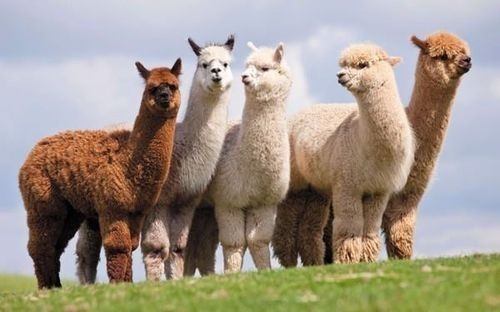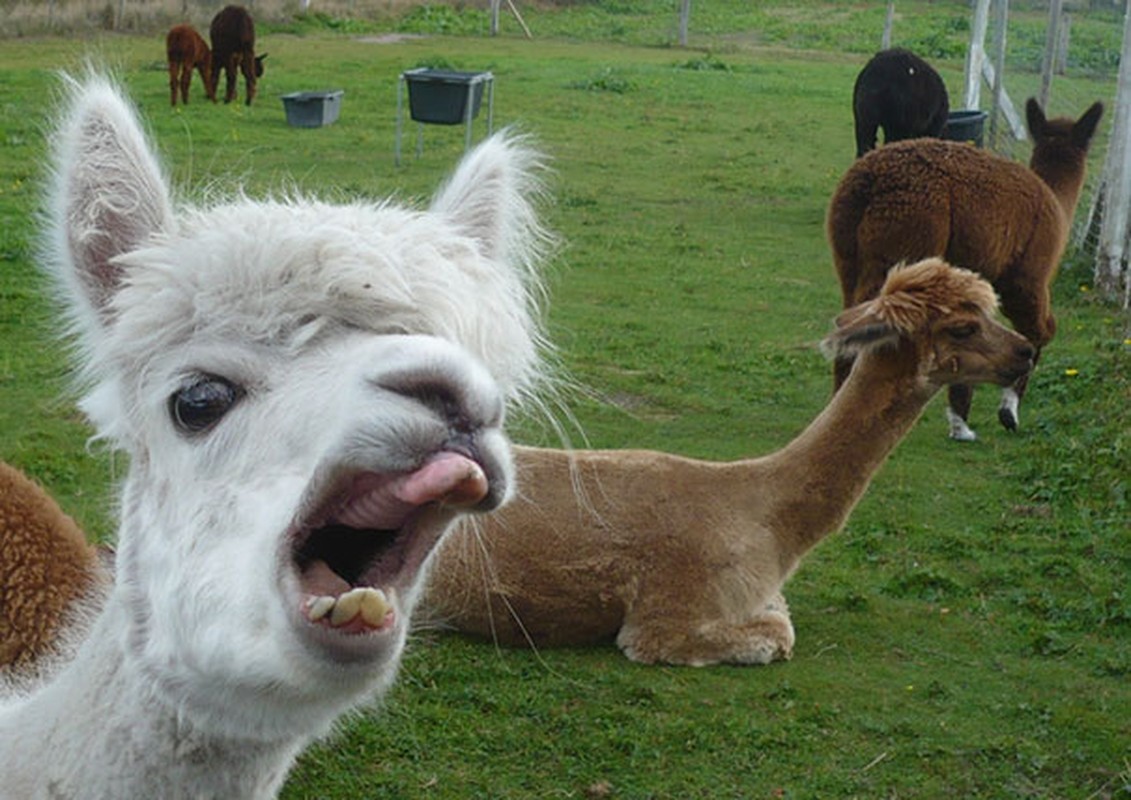Alpacas, often mistaken for their larger relatives, the llamas, are captivating creatures that hail from the Andean regions of South America. With their gentle demeanor and unique appearance, alpacas have become popular worldwide, not only as exotic pets but also as sources of high-quality fiber. Let’s delve into some intriguing facts about these charming animals.
Origin and History

Alpacas are native to the high Andes mountains of Peru, Bolivia, and Chile. They have been domesticated for over 6,000 years, primarily by the Inca civilization. Unlike llamas, which were used as pack animals, alpacas were prized for their fiber. Alpaca wool, known as “suri” or “huacaya,” was woven into textiles for royalty and ceremonial garments, a testament to its high quality and desirability.
Physical Characteristics

Alpacas are smaller than llamas, standing between 32 and 39 inches at the shoulder and weighing between 100 and 200 pounds. Their wool is one of their most defining features. It comes in a variety of natural colors, ranging from white and black to browns and grays, making alpacas an aesthetically versatile choice for fiber production.
There are two main types of alpaca fleece: huacaya and suri. Huacaya alpacas have a dense, crimped fleece that gives them a fluffy appearance, while suri alpacas have long, silky, and lustrous fibers that hang in locks. Both types of wool are incredibly soft, warm, and hypoallergenic, which makes them highly sought after in the textile industry.
Social Behavior

Alpacas are social animals that thrive in groups. They communicate with each other through a variety of sounds, including humming, which is their most common vocalization. This humming can express a range of emotions, from contentment to distress. They also use body language, such as neck stretching and ear positioning, to convey their feelings.
In their natural habitat, alpacas form herds led by a dominant female. This social structure helps them to stay safe from predators and provides them with a strong sense of community. When domesticated, alpacas typically form close bonds with their human caretakers and can be very affectionate.
Diet and Digestion
:max_bytes(150000):strip_icc()/GettyImages-180723850-e917f13ae8ed4164a4b989a0a476c740.jpg)
Alpacas are herbivores and have a diet that primarily consists of grasses and other vegetation. They are ruminants, which means they have a specialized digestive system with three stomach compartments that help them break down tough plant material. This unique digestive process allows them to efficiently extract nutrients from their food.
One interesting aspect of their feeding behavior is their habit of “spitting” when they are annoyed or feel threatened. This behavior is not as dramatic as it sounds; the spit is actually a mixture of regurgitated food and saliva, and it is used to assert dominance or communicate discomfort. However, alpacas generally have a calm and placid nature, and spitting is relatively rare in well-socialized animals.
Reproduction and Lifespan
Alpacas have a gestation period of approximately 11.5 months, which is relatively long for animals of their size. Females typically give birth to a single cria (baby alpaca) at a time. The cria is born fully covered in fleece and can stand and walk within a few hours, which is crucial for its survival in the wild.
The lifespan of an alpaca is generally between 15 and 20 years, although some can live into their mid-twenties. Their longevity is partly due to their relatively low-maintenance care requirements and their gentle nature, which means they are less prone to aggressive behaviors and injuries.
Alpacas in the Modern World
In recent years, alpacas have gained popularity outside their native regions. They are now found on farms and ranches around the world, from North America to Europe and beyond. Their fiber is used to make a wide range of products, including clothing, blankets, and home textiles. The growing interest in sustainable and natural fibers has contributed to the alpaca’s rise in prominence in the fashion and textile industries.
Alpacas are also celebrated for their role in eco-friendly farming practices. They have soft, padded feet that are gentle on the land, and their grazing habits can actually help maintain healthy pastureland. Additionally, alpaca manure is an excellent fertilizer that is rich in nutrients and does not require composting before use.
Fun Facts About Alpacas
- Unique Teeth: Alpacas have 32 teeth, but they only have upper incisors on their bottom jaw, not on their top. This specialized dental structure helps them graze effectively.
- Color Variety: Alpacas come in over 22 natural colors, and their wool can be dyed to create a wide range of shades. This diversity in color adds to the appeal of alpaca fiber in the fashion industry.
- Soft and Hypoallergenic: Alpaca wool is softer than sheep’s wool and is less likely to cause allergic reactions, making it a preferred choice for sensitive individuals.
- Climate Adaptation: Despite their high-altitude origins, alpacas are adaptable to a variety of climates. They can be found in temperate regions as well as in more extreme weather conditions.
In conclusion, alpacas are much more than their cute and fluffy appearance. Their rich history, unique characteristics, and the versatility of their fiber make them truly remarkable animals. Whether you’re a farmer, a fashion enthusiast, or just an admirer of these gentle creatures, there’s no denying that alpacas hold a special place in our world.
Learn more:
International pets service from Vietnam














